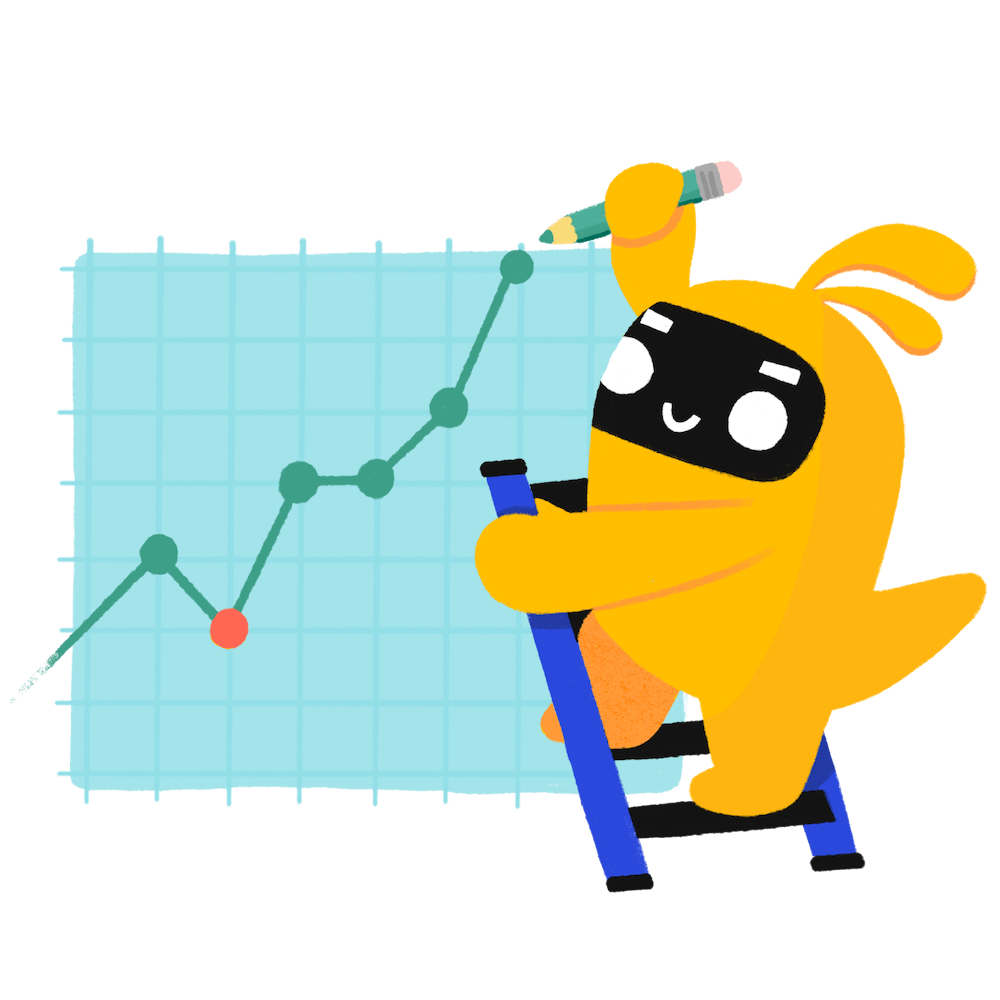6 customisable OKR examples for Hr Process Manager
What are Hr Process Manager OKRs?
The Objective and Key Results (OKR) framework is a simple goal-setting methodology that was introduced at Intel by Andy Grove in the 70s. It became popular after John Doerr introduced it to Google in the 90s, and it's now used by teams of all sizes to set and track ambitious goals at scale.
How you write your OKRs can make a huge difference on the impact that your team will have at the end of the quarter. But, it's not always easy to write a quarterly plan that focuses on outcomes instead of projects.
We've tailored a list of OKRs examples for Hr Process Manager to help you. You can look at any of the templates below to get some inspiration for your own goals.
If you want to learn more about the framework, you can read our OKR guide online.
Building your own Hr Process Manager OKRs with AI
While we have some examples available, it's likely that you'll have specific scenarios that aren't covered here. You can use our free AI generator below or our more complete goal-setting system to generate your own OKRs.
Feel free to explore our tools:
- Use our free OKR generator
- Use Tability, a complete platform to set and track OKRs and initiatives, including a GPT-4 powered goal generator
Our customisable Hr Process Manager OKRs examples
You will find in the next section many different Hr Process Manager Objectives and Key Results. We've included strategic initiatives in our templates to give you a better idea of the different between the key results (how we measure progress), and the initiatives (what we do to achieve the results).
Hope you'll find this helpful!
1. OKRs to streamline and optimize our HR data process
Streamline and optimize our HR data process
Train 100% of HR team on new data processing procedures and software
Identify suitable training courses for new data processing software
Monitor and verify team members' training progress
Schedule training sessions for all HR team members
Decrease time spent on HR data processing by 25%
Implement efficient HR automation software
Streamline and simplify the data entry process
Conduct training on effective data management
Implement a centralized HR data management system by increasing efficiency by 30%
Identify and purchase a suitable centralized HR data management system
Train HR staff to properly utilize and manage the system
Monitor and adjust operations to achieve 30% increased efficiency
2. OKRs to streamline HR processes through automation
Streamline HR processes through automation
Reduce turnaround time for HR tasks by implementing automated workflow systems
Research and select an appropriate automated workflow system for HR tasks
Train HR team to utilize new automated workflow systems
Track and measure task turn-around time improvements
Increase employee self-service options to improve efficiency and user experience
Develop tutorial materials for navigating self-service options
Conduct periodic user experience surveys to gather feedback
Implement a comprehensive digital HR platform for employee inquiries
Implement automated onboarding system to reduce manual data entry
Purchase and install chosen onboarding software
Train staff on system functionality and utilization
Research best automated onboarding systems on market
3. OKRs to accelerate the company's hiring process
Accelerate the company's hiring process
Increase the hired candidates by 30%
Enhance recruitment strategies to attract more potential candidates
Implement incentives for employee referrals
Invest in further recruiter training and resources
Improve job postings to attract 20% more candidate applications
Increase job posting visibility across multiple platforms
Highlight benefits, company culture, and growth opportunities
Revise job descriptions to include clear and detailed responsibilities
Shorten the interview process to a maximum of two weeks
Schedule back-to-back interviews to hasten decision-making
Implement preliminary screening calls to weed out unsuitable candidates
Streamline interview questions, focusing on crucial ones only
4. OKRs to streamline the company's recruitment process for efficiency and quality hires
Streamline the company's recruitment process for efficiency and quality hires
Shorten the average hiring process time by 30%
Implement an efficient applicant tracking system
Improve job posting clarity to attract qualified applicants
Create a structured, streamlined interviewing process
Introduce a structured training program leading to 15% higher candidate performance
Identify key skills that directly influence candidate performance
Develop comprehensive training materials focusing on these skills
Implement regular assessments to measure performance improvement
Enhance the selection process to increase successful onboarding rate by 20%
Introduce a robust pre-employment skill assessment
Revamp job descriptions to focus on key qualifications and skills
Implement a comprehensive, structured interview process
5. OKRs to validate AI's fit for automating HR processes
Validate AI's fit for automating HR processes
Conduct 20 stakeholder interviews to identify current HR process challenges
Prepare an interview guideline highlighting HR process issues
Identify and list 20 key stakeholders for interviews
Conduct the 20 stakeholder interviews
Collect and analyze feedback from 100 potential end-users to gauge AI solution acceptance
Analyze the collected feedback for user acceptability trends
Draft and distribute a user feedback survey on the AI solution
Gather received feedback from the 100 potential end-users
Test AI solution on 5 HR tasks, and achieve 80% efficiency improvement
Identify and select 5 HR tasks for AI implementation
Implement AI solution on selected tasks
Evaluate and record efficiency improvement
6. OKRs to implement standard operating procedures effectively
Implement standard operating procedures effectively
Develop a step-by-step guide for each department's procedures by end of next quarter
Identify unique procedures followed by each department
Document each procedure step-by-step
Compile and review collected procedure guides
Achieve 30% reduction in process-related errors and inefficiencies within next quarter
Adopt error-minimizing and efficiency-boosting software systems
Conduct detailed review and analysis of current process-related errors
Implement training programs to enhance employee efficiency
Train 80% of staff to competently follow new procedures within next quarter
Identify suitable training programs for the new procedures
Develop a mandatory participation schedule for employees
Conduct regular assessments to evaluate competency
Hr Process Manager OKR best practices to boost success
Generally speaking, your objectives should be ambitious yet achievable, and your key results should be measurable and time-bound (using the SMART framework can be helpful). It is also recommended to list strategic initiatives under your key results, as it'll help you avoid the common mistake of listing projects in your KRs.
Here are a couple of best practices extracted from our OKR implementation guide 👇
Tip #1: Limit the number of key results
The #1 role of OKRs is to help you and your team focus on what really matters. Business-as-usual activities will still be happening, but you do not need to track your entire roadmap in the OKRs.
We recommend having 3-4 objectives, and 3-4 key results per objective. A platform like Tability can run audits on your data to help you identify the plans that have too many goals.
 Tability's audit dashboard will highlight opportunities to improve OKRs
Tability's audit dashboard will highlight opportunities to improve OKRsTip #2: Commit to weekly OKR check-ins
Don't fall into the set-and-forget trap. It is important to adopt a weekly check-in process to get the full value of your OKRs and make your strategy agile – otherwise this is nothing more than a reporting exercise.
Being able to see trends for your key results will also keep yourself honest.
 Tability's check-ins will save you hours and increase transparency
Tability's check-ins will save you hours and increase transparencyTip #3: No more than 2 yellow statuses in a row
Yes, this is another tip for goal-tracking instead of goal-setting (but you'll get plenty of OKR examples above). But, once you have your goals defined, it will be your ability to keep the right sense of urgency that will make the difference.
As a rule of thumb, it's best to avoid having more than 2 yellow/at risk statuses in a row.
Make a call on the 3rd update. You should be either back on track, or off track. This sounds harsh but it's the best way to signal risks early enough to fix things.
How to turn your Hr Process Manager OKRs in a strategy map
The rules of OKRs are simple. Quarterly OKRs should be tracked weekly, and yearly OKRs should be tracked monthly. Reviewing progress periodically has several advantages:
- It brings the goals back to the top of the mind
- It will highlight poorly set OKRs
- It will surface execution risks
- It improves transparency and accountability
Spreadsheets are enough to get started. Then, once you need to scale you can use a proper OKR platform to make things easier.
 Tability's Strategy Map makes it easy to see all your org's OKRs
Tability's Strategy Map makes it easy to see all your org's OKRsIf you're not yet set on a tool, you can check out the 5 best OKR tracking templates guide to find the best way to monitor progress during the quarter.
More Hr Process Manager OKR templates
We have more templates to help you draft your team goals and OKRs.
OKRs to streamline service requests via self-service platform
OKRs to maximize AI consulting services revenue
OKRs to improve the efficiency of the chargeback recovery process
OKRs to boost NTS and CSAT scores for enhanced customer satisfaction
OKRs to acquire proficiency in business analysis as a beginner
OKRs to double weekly leads through SEO
OKRs resources
Here are a list of resources to help you adopt the Objectives and Key Results framework.
- To learn: What is the meaning of OKRs
- Blog posts: ODT Blog
- Success metrics: KPIs examples
Create more examples in our app
You can use Tability to create OKRs with AI – and keep yourself accountable 👀
Tability is a unique goal-tracking platform built to save hours at work and help teams stay on top of their goals.
 1 Create your workspace
1 Create your workspace 2 Build plans in seconds with AI
2 Build plans in seconds with AI 3Track your progress
3Track your progress